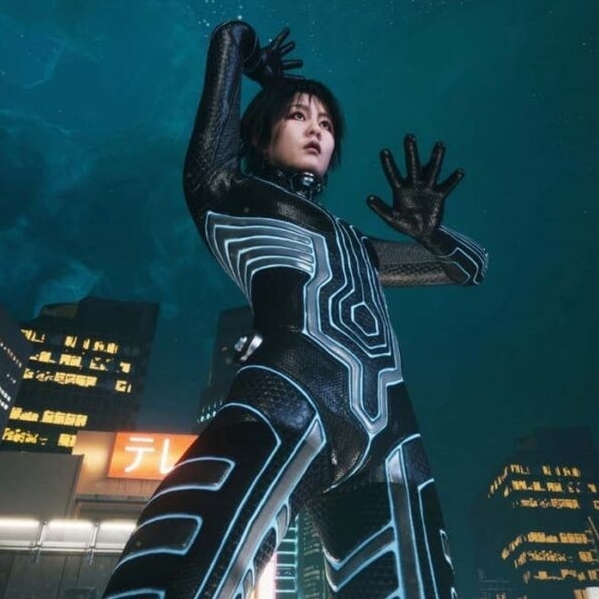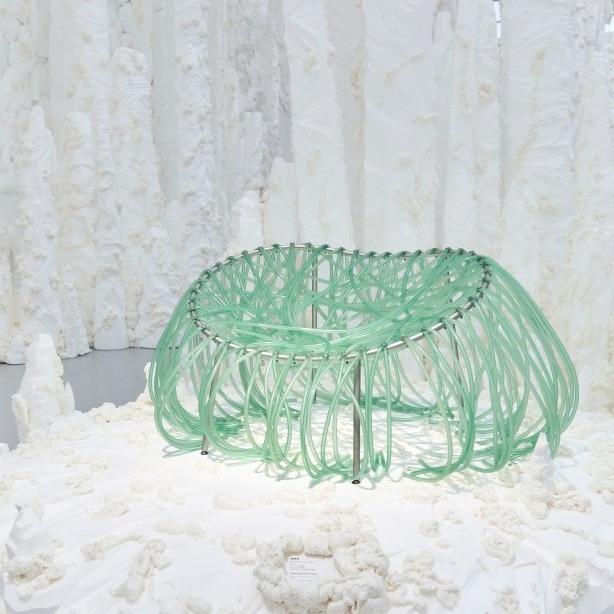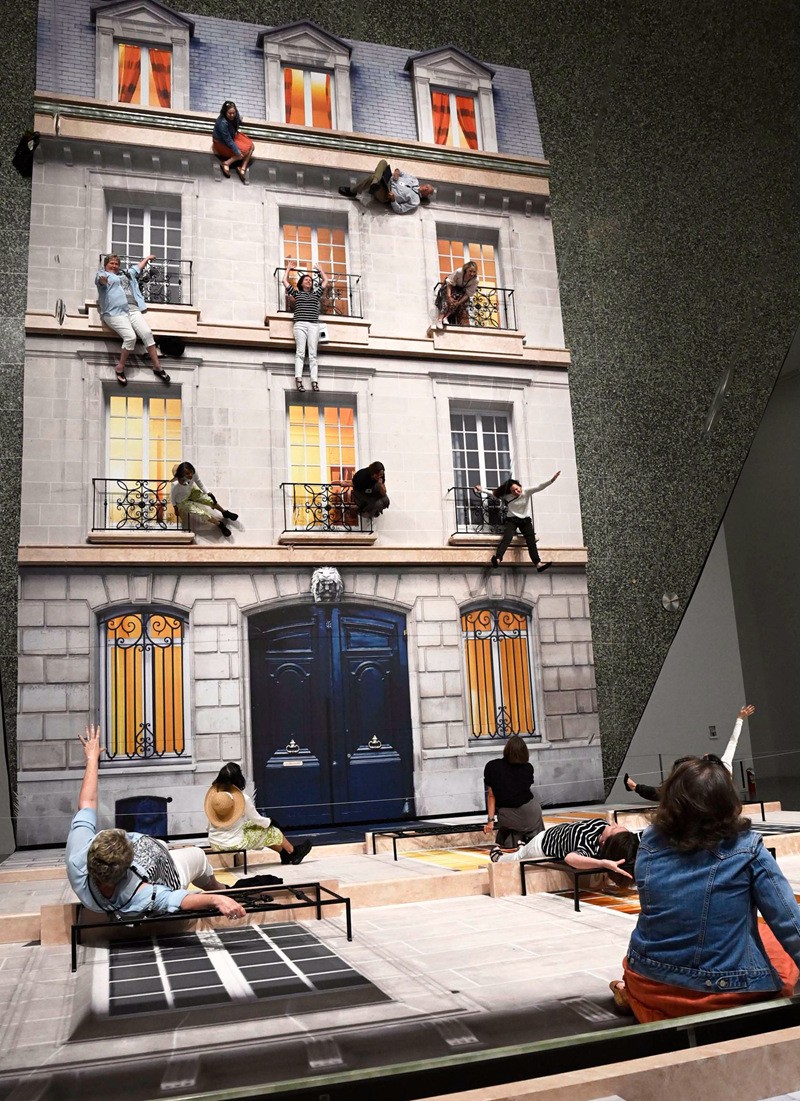
Installation view at MFAH Leandro Erlich, Batiment, 2004, Nuit Blanche, Paris, France. ? Leandro Erlich Studio
Conceptual artist Leandro Erlich creates visual paradoxes and optical illusions that force you to question your perception of reality. He renders everyday situations confounding—a staircase that misleads to go nowhere, or an elevator that appears partially stuck below ground.
Seeing Is Not Believing features two of Erlich’s most iconic installations: Batiment (Fa?ade) and Le cabinet du psy (The Psychoanalyst’s Office). These immersive, room-size environments and a selection of additional works span the career of the acclaimed Argentinean artist, whose psychological subversion of the everyday seems to defy the basic laws of physics while challenging your sense of balance, space, and the absolute.
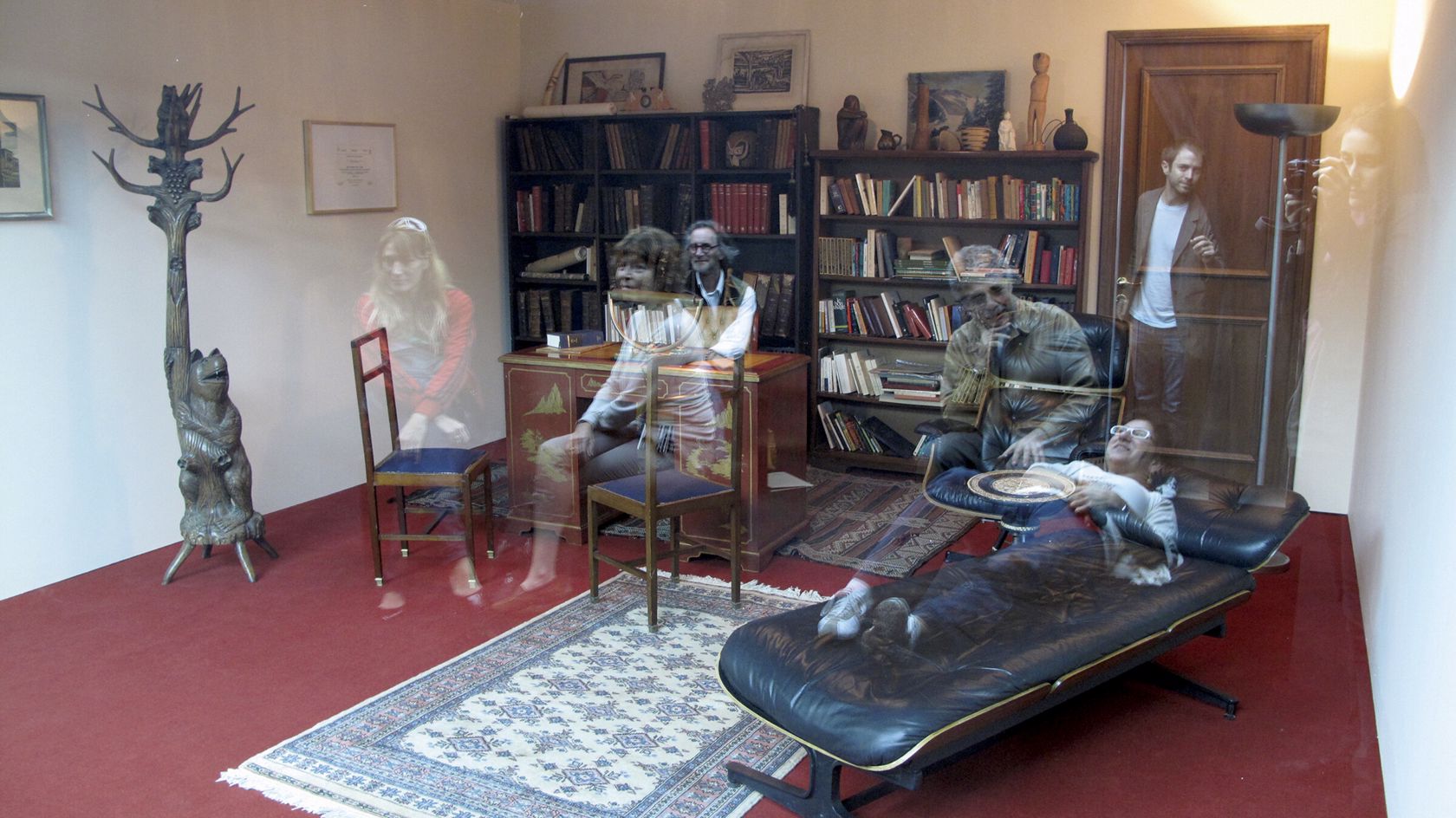 Leandro Erlich, Le cabinet du psy, 2005, two rooms of identical dimension, furniture (sofa, bookcase, desk, chairs), carpet, glass and lights, PROA, Buenos Aires, Argentina, 2012 ? Clara Bullen, courtesy Leandro Erlich Studio
Leandro Erlich, Le cabinet du psy, 2005, two rooms of identical dimension, furniture (sofa, bookcase, desk, chairs), carpet, glass and lights, PROA, Buenos Aires, Argentina, 2012 ? Clara Bullen, courtesy Leandro Erlich Studio
“Leandro Erlich has been mining the uncanny in the everyday for nearly 30 years. His work has been presented worldwide, yet not as frequently in the U.S.,” commented Gary Tinterow, Director and Margaret Alkek Williams chair of the Museum of Fine Arts, Houston. “It is especially because Erlich began his artistic career here in Houston and at the MFAH, as a resident of the Core program of the Glassell School of Art, that I am so pleased this will be both a homecoming for him and a revelation for our audiences.”
“Over more than 25 years, Leandro Erlich has deeply considered the emotional, social and even socio-political dimensions of our everyday environments,” said Mari Carmen Ramirez, Wortham Curator of Latin American Art. “His interventions into ordinary spaces resonate perhaps even more so today, at a time when our collective sense of time and space has become fluid and uncertain.”
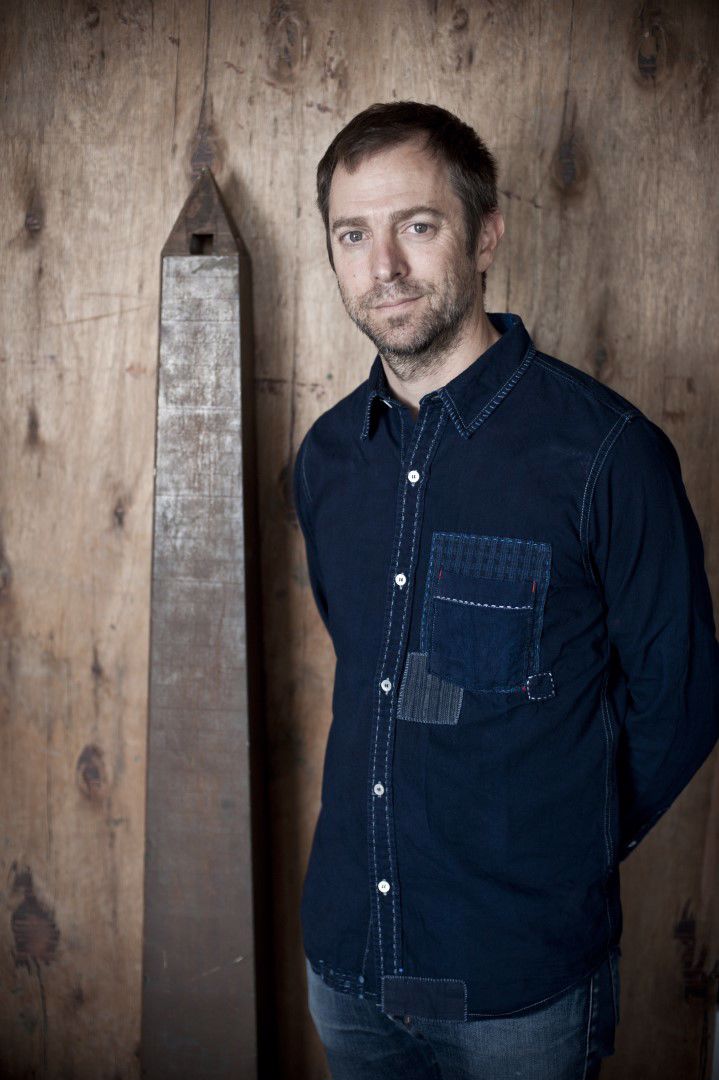
Leandro Erlich
Leandro Erlich (b. 1973) explores the perceptual bases of reality and our capacity to confront these fundamental foundations. The architecture of the everyday is a recurring theme in Erlich’s art, aimed at creating a dialogue between what we believe and what we see, just as he seeks to close the distance between the museum or gallery space and daily experience. As he said in a 2014 interview, he considers space “the ‘stage’ of our lives. … My work is like opening a window to see the new world and other realities.”
His inspiration has been drawn from the writing of Jorge Luis Borges, and the discomfiting films of directors such as Alfred Hitchcock, Roman Polanski, Luis Bu?uel and David Lynch, all of whom, he has said, “have used the everyday as a stage for creating a fictional world obtained through the psychological subversion of everyday spaces.”
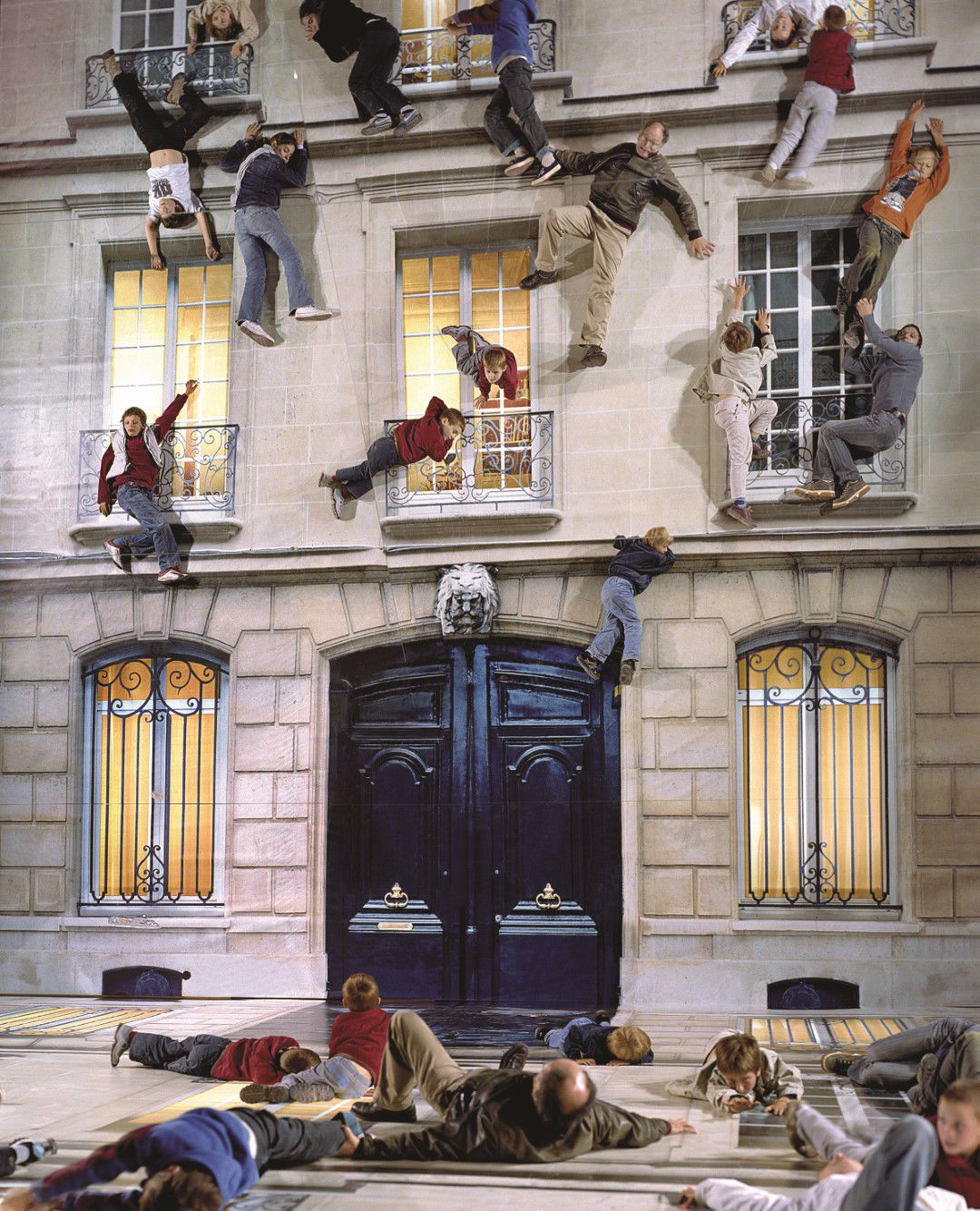
Leandro Erlich, Batiment, 2004, Nuit Blanche, Paris, France.?Leandro Erlich Studio
For this exhibition, the MFAH presents two large-scale, immersive installations: Le cabinet du psy (The Psychoanalyst’s Office) (2005) and Batiment (Fa?ade) (2004), to anchor a selection of smaller-scale works. Spanning the artist’s career, with works from the MFAH collection and private Houston collections, the selections begin with his earliest architectural interventions, produced during 1997-99 and his residency as a Core Program Fellow at the Glassell School of Art of the MFAH, and culminate with his more recent explorations into the instability of the built environment:
? In the site-specific environment that Erlich creates with his iconic Batiment (2004) he plays with reflections by juxtaposing a reproduction of a building fa?ade with a monumental mirror. Lying on the gallery floor between the two elements, visitors can move, position and see themselves in a gravity-defying illusion, seemingly suspended across the facade of a four-story, 19th-century French house.
? To participate in Le cabinet du psy (The Psychoanalyst’s Office) (2005), viewers enter one of two rooms, each separated from the other by a large glass panel. They then see their reflection projected within a psychoanalyst’s office. Even though they are unable to access that space, they experience the duality of being in two places at one time: on the outside peering in, and on the inside, peering out.
? Elevator (1996) is a scaled-down version of an elevator car. Here, Erlich turns a familiar encounter inside out: the features usually found on the inside of an ordinary elevator--mirror, buttons, and handles--are presented on the exterior. Behind the grate, on the inside of the "elevator," mirrors create the startling sensation of an infinitely deep elevator shaft. Ehrlich invites the viewer to consider what is real and what is an illusion.
? Neighbors (1996), presents a segment of a corridor wall, as if from an apartment building interior, with two doors, both with peepholes. Ordinarily the peephole allows the person behind the door to peer out to the person in front of the door. In this case, however, the viewer sees instead the corridor of an apartment building and a neighbor’s door – a space that cannot possibly exist.
? Projector Corridor (2007) is comprised of a trapezoidal box with images of apartment doors painted on the sides and front. As the viewer peers through the peephole in the front door, they see the expanse of a residential hallway thus giving the momentary illusion of being in two places at one time.
? Night Flight (2015) juxtaposes two views through airplane windows – a day view with clouds on the left; a night view with city lights on the right – presenting day and night at once and conveying the bleary, disorienting perspectives induced by a red-eye flight.
About the exhibition
Dates: June 29–September 5, 2022
Venue: The Museum of Fine Arts, Houston
Courtesy of The Museum of Fine Arts, Houston.




